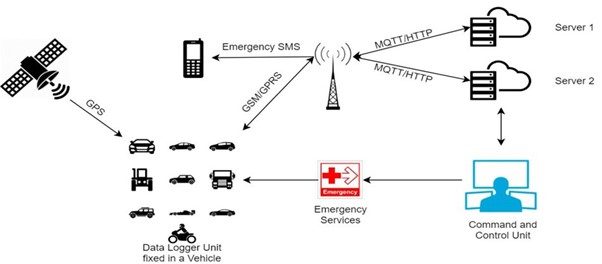The Delhi Nirbhaya case in 2012 shook the conscience of the whole nation. Since then, the government of India has been actively taking measures to ensure passenger safety in commercial and public transportation. In 2019, the government mandated the adoption of AIS 140, a key regulation which ensures that all commercial vehicles can be tracked through GPS devices fitted in the vehicles.
AIS 140 was framed by the Automotive Research Association of India (ARAI) and Automotive Industry Standards (AIS) under Intelligent Transport System (ITS) requirements. We have given you an overview of AIS 140 standards in one of our previous articles.
The AIS 140 standard, apart from being applicable to the overall system environment of a public transport vehicle, is also relevant to its individual components. This standard has been seeing increased adoption in the Indian telematics domain. A few years down the line, every truck or public transport bus in India would be fitted with a GPS device that enables telematics, i.e., vehicle tracking, navigation, SOS features, etc.
The engineers at Embitel’s Innovation Lab have been busy designing a ready-to-deploy AIS 140 compliant software stack solution that would accelerate the development of such a GPS device. Read on to understand the solution in detail.
AIS 140 Compliant VLT Device/Data Logger – System Overview

Standard Requirements for an AIS 140 Compliant VLT Device
- A Vehicle Location Tracking (VLT) device should be configured to obtain the position information of vehicles through Global Navigation Satellite System (GNSS).
- The device should transmit data to a government authorized server (Backend Control Server) through a communication network such as GSM or GPRS, as per the specified protocol.
- The device should have the capacity to transfer data to at least 2 different IP addresses.
- The system should be designed to store data in its internal memory (up to 40,000 log messages). In the event of unavailability of the communication network (GPRS), the device should transfer this data through SMS to the preconfigured numbers. The history packets will also be transferred when the network is back, in LIFO sequence.
- The device should have a unique identifier and an embedded SIM.
- The system should support standard minimum input and output, i.e., 2 analogue, 4 digital, and 1 serial communication for interfacing external systems.
- The device should transmit the position of the vehicle, velocity, time, and direction of travel to the server at a configurable frequency.
- The system should have Emergency alert buttons that send SOS signals to the pre-configured IP addresses. These buttons will be spread across the vehicle at accessible locations for the passengers and the driver. So, if the passengers or in-vehicle crew presses the emergency button, an alert will be sent to the server in real-time.
- The device should have a backup battery that enables it to operate for 4 hours continuously.
- The device parameters and firmware should be configurable Over-the-Air (OTA).
- The system should have a 3-axis accelerometer and a 3-axis gyroscope for detecting harsh turns, braking and acceleration.
Apart from the above, there are several hardware requirements such as operating voltage range, sleep mode current specifications, waterproofing, and more. Our software stack solution is developed assuming that all the hardware requirements are met.
Let us now take a look at the software stack solution.
Key Features of Our AIS 140 Compliant Software Stack
The AIS 140 software library designed and developed by our engineers brings about significant reduction in automotive ECU development time. Some of the key features of this stack are as follows:
- This software library helps in constructing the standard frame format needed to transfer data to the server.
- It helps in analysing the commands received from the server, parsing them and storing the modified data.
- It also calculates the CRS (32 bit) required for data transmission.
- The stack is flexible enough to allow the customisation of frames. It is possible to easily modify the field position, start character and end character. This flexibility enables the stack to be deployed in multiple projects easily.
- It enables driver behaviour detection. Activities such as harsh turns, braking and acceleration are recorded.
The testing team has been iteratively testing the software and fine-tuning it to be error-free, over the past few months.
Challenges Faced in the Development Journey
Throughout the software development life cycle, there have been some challenges with respect to hardware availability. These have been mitigated to a large extent through the dedicated efforts of the team.
It is with great pride that we now introduce this solution to you. Our solution can be used for the software configuration of AIS compliant Vehicle Tracking Systems (VTS) across India in a few weeks’ time, and we couldn’t be more excited!
Kudos to the development and testing teams that worked on this project!



